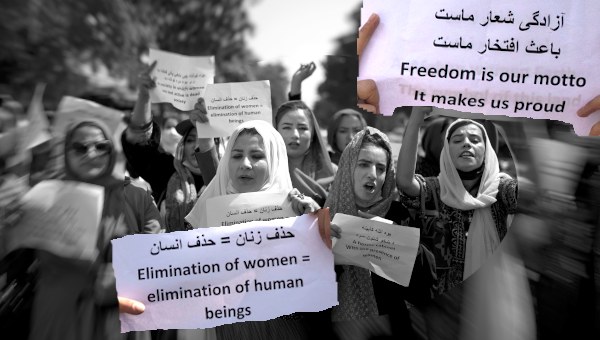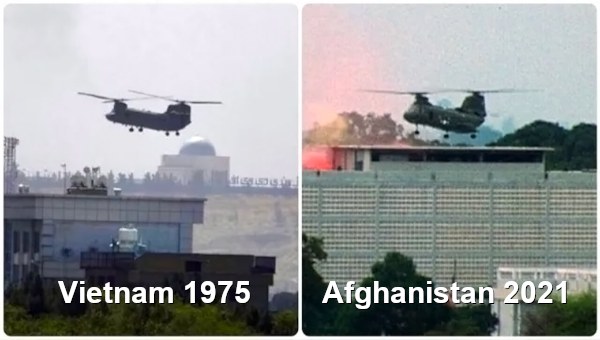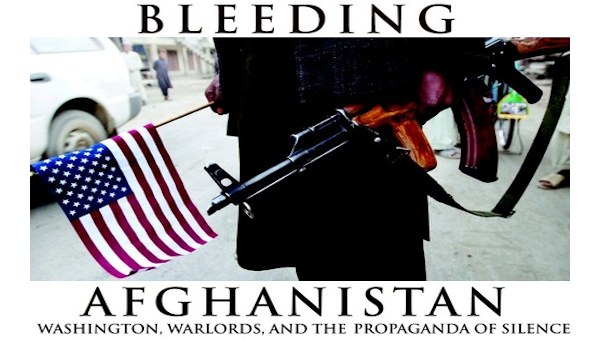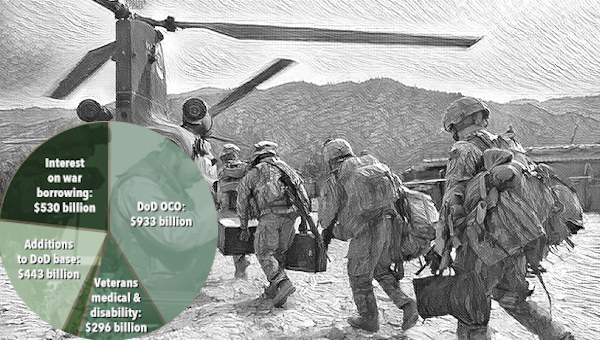Who’s Getting It? The Canadian Mission in Afghanistan
Since relieving American forces in Kandahar on 28 February 2006, Canada’s casualties in Afghanistan have come from a suicide bombing, an Armoured Personnel Carrier (APC) accident, an axe attack on a soldier, and a killing by apparently friendly fire. There have also been dozens of casualties from both firefights and troop movements in hostile terrain. In the wake of these casualties, about half of Canadians display unease with Operation Archer – the code name for Canada’s growing commitment to the U.S. led mission in Afghanistan – as recorded in polls through April. According to the Canadian media and political elites, Canadians aren’t ‘getting it’: the 9/11 assault on the Twin Towers was also an attack on Canada; Canadian security needs the mission to prevent terrorist assaults on Canada, and Osama Bin Laden has named Canada; and Canada is engaged in the heroic cause of bringing democracy to long-suffering Afghanistan.
Indeed, in the Parliamentary ‘Take Note’ debate that was finally held on 10 April 2006 on the Canadian deployment, Conservative Prime Minister Stephen Harper made a long-term commitment to Canadian troops in Afghanistan on the basis of fighting global terrorism and state-building. The Opposition Liberals, of course, backed this reasoning, given that they had made the commitment to the deployment when still the government in the fall of 2005, without bothering to brief Parliament and the country on the extent of the mission. The Bloc Quebecois and the NDP affirmed the all-party consensus to ‘support the troops’, illustrating just how out of touch parliamentary representation is from the Canadian people. No party even insisted on the basic democratic principle that Parliament should have the constitutional right to approve or reject any foreign troop deployment through motion and debate, rather than Prime Ministerial executive action in the name of the sovereign (yes, to Canada’s shame, in the name of the British crown!). The debate mainly revealed that Canada was not in fact in charge as of yet of NATO multinational force operating under UN backing, but was in fact under U.S. command in southern Afghanistan. Such is the practice of democratic sovereignty in Canada today.
The Media and the War
Since the new deployment, Canada’s political and economic elites have been working the media to convince Canadians of the importance of the battle of Afghanistan. The unstated goal has been to obscure the nature of the ‘long war’ that Canada has now formally taken up, and the purpose of Canada’s growing military integration with the U.S. The initial media coverage of the Canadian Kandahar deployment illustrates this well.
The pages of the Toronto Star have been one terrain of this pitched battle. A most strident defender of Canada’s involvement in Afghanistan has been the University of Calgary’s and the Canadian Defence and Foreign Affairs Institute’s (CDFAI) David Bercuson. Bercuson is often noted as a member of the ‘Calgary School’ of academics closely associated with Prime Minister Harper and the Conservative Party. Bercuson began his March 7 opinion piece in the Toronto Star (“Public hasn’t grasped reality of war: Afghanistan far from peacekeeping; Canadians”) with the declaration that “the core mission of all armies is not to wear blue helmets and ‘peace-keep,’ but to fight wars and prepare for wars.” Bercuson blustered that “many Canadians clearly didn’t get the message at all” of General Rick Hillier, Canada’s Chief of the Defence Staff, when he explained the dangers of the mission. Bercuson went on to outline a U.S. Marine commander’s vision of how western militaries such as Canada’s will be “fighting an all-out insurgency.”
Bercuson’s CDFAI has been a shameless supporter of the Afghanistan mission and closer military and foreign policy integration with the U.S. A CDFAI paper, co-authored by Bercuson, titled “In the National Interest: Canadian Foreign Policy in an Insecure World” states that “the only real imperative in Canadian foreign policy is Canada’s relationship with the U.S. All other Canadian international interests are far behind the importance of maintaining friendly and workable relations with the Americans.” Bercuson and his co-authors go on to argue that Canada should make sure that interoperability with the U.S. military is a prerequisite for weapons procurement for Canada’s military.
For his part, the liberal Richard Gwyn, also writing for the Toronto Star on February 21 (“Afghan task good – but painful – for Canada”), took up the war cry with a strident description of a firefight between Canadian soldiers defending their base and Afghani insurgents. The firefight serves as premise for Gwyn to explain to his readers that “killing the bad guys – the Taliban – is an integral part of the mission”, as well as dealing with the “almost as dangerous” drug lords (Gwyn wilfully ignoring that many of these sit in the elected parliament, and as part of the process of ‘state-building’ the NATO countries are working to convince the drug lords to invest their earnings in Afghanistan!). Gwyn then rhetorically asks: “Is it worth while? It is most certainly to the 3 million Afghan refugees who, after decades of civil war and slaughter, have at last come back from Pakistan” and “the immense numbers of Afghanis” that voted in “peaceable elections.” Further, Canada at war is justified by the “hundreds of thousands of girls” able to go to school, and the farmers who “by using mobile phones” could pick the best time to send their sheep and goats to market.
Like the slavish American media, the Canadian press has just as ardently linked the Canadian effort to the ‘war on terror’ (parroting the falsifications of Prime Minister Harper and General Hillier). In a March 12 in the Toronto Star column (“For 50 years we’ve been told we are peacekeepers, as though that never involves killing”) plumping for war, Rondi Anderson, a neoliberal currently being feted for getting the Toronto Star to open its pages regularly to her shrill writing, reminded readers that “Canadians were murdered on 9/11.” All that was left was the editorial group itself to jump on board the ‘let’s go-to-war’ bandwagon. Indeed, on March 3 the editorial pages screamed with concern that Canada not “be the ‘weak link’ in the coalition” as “our American neighbour has been attacked and we have been named on Al Qaeda’s hit list. Our reply must be a steely one.” These sentiments for war have been echoed in the rest of Canada’s media, often in even more strident terms than Canada’s ‘social justice’ paper of record. Such is the appalling state of journalism in this country.
Business and State Support for War
The above media war posturing actively mis-represents the nature of Canadian military policy, the Afghanistan context and the reasons for war. It is no secret that the Canadian media is one of the most concentrated and controlled by the capitalist class. And the CBC state media can hardly be congratulated for widening the political range of opinion in general, and in particular the shameful way ‘The National’ covered the initial deployment to Kandahar. It is no secret that the major capitalist organizations in Canada have been campaigning for deeper military and security integration with the U.S. as one means to secure market access. This process had already begun under the Liberals. Both the Chretien and Martin administrations had begun linking Canada more closely to the U.S. in security and military matters even while avoiding a combat role directly in Iraq. This was partly through support deployments in the Gulf and by providing a security force for the Afghanistan front in the initial War on Terror.
The Canadian Council of Chief Executive’s (CCCE) “New Frontiers: Building a 21st Century Canada-United States Partnership” position paper, published in April 2004, argued for the establishment of a U.S. led continental defence perimeter. It also stated that Canada should “no longer be a free rider and a toothless advocate of soft power,” and should instead be “serious about being a true ally in the struggle for global peace and security.”
The Canadian Government’s 2005 International Policy Statement focussed on “security” and re-shaping the strategic capabilities and orientation of the Canadian Forces. The Statement, closely matching Bercuson’s vision, sees Canada’s troops being more functionally capable of being deployed to fight counter-insurgencies. This is only one component of the entire re-thinking of Canadian security, defence and foreign policies to bring them in line with the Bush Doctrine of ‘pre-emptive war’ and the U.S. and NATO campaigns in the Middle East. With the new Canadian deployment in Afghanistan, the media ideologues, the corporate elites, and Canada’s new foreign policy agenda are becoming as one.
An Afghan Security Threat to Canada?
The making of the security threat in Afghanistan that has brought Canada now to an explicit war front needs to be examined. It is an area of the greatest silences in the barrage of Canadian media propaganda in ‘support of the troops.’
Beginning in 1979, and continuing throughout the 1980s, it was the United States, in concert with Saudi Arabia, Pakistan, and others, that trained and equipped the Muslim fascists that made up the Mujahideen who fought against the secular government of Afghanistan and its Soviet backers. Historian V.G. Kiernan, in his book, America, The New Imperialism: From White Settlement to World Hegemony, explained that after the Soviet intervention in 1979, “the CIA soon assembled. forces from some of the most reactionary elements of contemporary Islam, not only in Afghanistan but also from distant reaches of the Arabian peninsula”. One of these “holy warriors” was the now infamous Osama Bin Laden who would later state: “I set up my first camp where the volunteers were trained by Pakistani and American officers. The weapons were supplied by the Americans, the money by the Saudis’.”
The sin of the People’s Democratic Party which controlled the Afghani Government in the late nineteen seventies and throughout the nineteen eighties was it’s espousal of anti-imperialism, nationalism, and Marxism as well as its closeness to the Soviet Union. The government, among other progressive moves, engaged in land redistribution, the construction of schools, establishment of women’s rights (including the right to an education) and the cancellation of peasant debt to money lenders. The U.S., as has been its historical habit in other theatres, supported the landowners and other elites, many of whom were Islamic clerics. What followed was twelve years of vicious warfare and terrorism that transformed Afghanistan into a nightmare state where American cold warriors and religious fascists conspired to destroy every meaningful gain made by the Afghani people. The U.S., and its partners, spent more than $1.5-billion destroying Afghanistan through supporting terrorists. The Taliban and Al Qaeda that the Canadian military has been combating in Afghanistan since late 2001 are the heirs turned disgruntled terrorists of Washington’s less than noble intervention in that country. This awful truth has been wilfully ignored by Bercuson, Gwyn, the CCCE, and the Canadian Government, regardless of the party. Their new-found concern for Afghani school girls and 3 million refugees in Pakistan would have been misplaced had Uncle Sam and the other Western imperialist powers had left well enough alone and not trained and armed their old religious allies turned mortal enemy.
Neoliberalism: State-Building and Military Spending
As in Iraq, the priority to establishment of a neoliberal policy regime in Afghanistan under the auspices of rebuilding a ‘failed state’ and in the name of security has also missed serious examination by the media or Canadian politicians. A market economy under western control has been the aim of the U.S. and its “allies” occupying Afghanistan. This means, of course, compromising with warlords, drug runners, arms traders, and all else of course that constitutes the Afghan private sector after more than two decades of strife. Just as they supported the worst kind of people in the anti-communist project almost two decades ago, today the U.S. and Canadian troops prop up an Afghani government loaded with warlords and rife with corruption (including the incredibly seedy Washington stooge and former Taliban supporter, Prime Minister Hamid Karzai).
The neoliberal agenda in the creation of the new Afghan state was all too evident in the Afghan Government’s statement of principles in its National Development Budget plans, meant to guide fiscal and development decision making. This document declares, in a country piecing itself back together at desperate levels of income, that “the State has a very limited role in the production of goods and services. The private sector is the primary producer of goods and services.” It further goes on to proclaim, in the face of the enormous evidence to the contrary, especially for developing countries, that “international experience shows that the private sector implements more cheaply than the public sector. To ensure that the greatest number of services can be delivered with the limited resources, the private sector should be the implementer of projects unless there are strong reasons for alternative arrangements” (available here).
Media analysis of the Afghan war, and political commentary from all sides of the House as well, have also ignored the intertwining of the military project in Afghanistan and arms sales. It is one of the areas of public spending that consistently escapes neoliberal scrutiny. Defence industry corporations in Canada and the U.S. make billions on ‘missions’ such as ‘the war on terror’. They are part of the continual military policy cycle of external threat, destabilization and intervention, arms spending, new weapons development and procurement, followed by a new external threat. This process has been a theme of writing on the political economy of North American military spending for some time. It is now nicely depicted in the documentary playing at cinemas across North America, ‘Why We Fight’ (2005).
Since 9/11, and well before the recent moves to extend aggressive Canadian military interventions abroad, Canada’s security and defence spending has been growing rapidly and yearly. Canada’s 2005 Federal Budget of the Martin Government approved $12.8 billion over five years for the military in 2005. Conservatives have at least $5 billion more during the election. This is likely to grow, given the commitments to expand troop levels and the need to more rapidly replace equipment being deployed. On top of this, Harper remains committed to additional spending on Arctic patrols and seemingly to additional Canadian actions in other areas of the world (beyond the military intervention still ongoing in Haiti). For example, a beneficiary of the explosion of the defence budget and Afghan mission has been General Dynamics Land Systems (GDLS). In 2004, the London, Ontario based GDLS Canada was awarded a $165 million contract extension to manage Canadian Forces light armoured vehicles such as the air-transportable LAV III, a weapons system in which Canadian soldiers patrol Afghanistan. GDLS Canada has also recently won a contract worth $60.2 million for twenty-five Mine Protected Vehicles. Canadian Forces previously deployed three of these vehicles in Afghanistan and they have been considered suitable for the security operation there and in other theatres. As well, $750-million has been slated for a Multi-Mission Effects Vehicle (MMEV) that will be able to combat both air and land targets under the Canadian Forces’s new security doctrine.
The howitzers being used by Canadian troops (and beloved by the Canadian media in their discussion of firefights) are manufactured by BAE Systems, and were procured from the U.S. Marines Corps as part of a $234 million Foreign Military Sales Contract. The appointment by Conservative Prime Minister Stephen Harper of a defence industry lobbyist to the post of Minister of National Defence, Gordon O’Connor, signals the all too cozy relationship between profit-making in weapons and military strategy.
‘Getting it’
The crowing by the Canadian media and neoliberals about Operation Archer to rescue a ‘failed state’ and to contribute to ‘nation building’ in Afghanistan conceals more than it reveals about the actual political forces at work. It is as dishonest as the propaganda and falsehoods that
launched the American operations in Iraq. The cost is Afghani and Canadian lives. The ‘national interest’ is in fact being seamlessly connected to ‘corporate interests’ in the making of neoliberal globalization. The imperialist deployment of the Canadian military – still effectively operating under U.S. command in Afghanistan – is one form of this connection. Another form is the rights-violating anti-terrorism laws, with their use of security certificates and illegal internment of Canadian citizens abroad. It is a terrible shame that none of this came out in the Parliamentary debate on the Afghan troop deployment: the all-party consensus to back the troops, including from Jack Layton’s NDP ever more cozying up to the Conservatives, held steadfast. The NDP is expressing concern only over the ‘terms of engagement’ and the ‘prospects for success’ of the mission. The extent of the NDP’s ‘bold’ opposition is to call for another ‘debate and a vote in the future’ if the Canadian mission is extended. This is something that the Canadian peace and union movements must say is simply not good enough.
The Harper government and the Canadian media have been complaining that Canadians have not been ‘getting it’ in their lukewarm ‘support for the troops’ abroad. This is another falsehood perpetuated by ruling elites. As Canadians increasingly ‘get it’, they ever more oppose the war and make the connection with all that is rotten with neoliberalism, capitalism and democracy today. •
Richard Harding is an activist in Windsor CAW Local 200.





